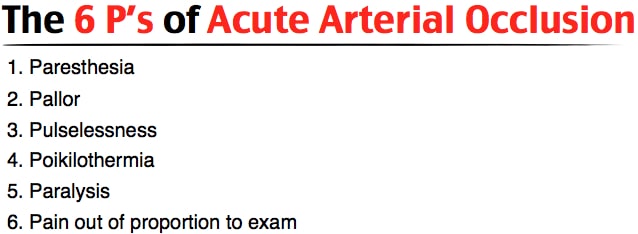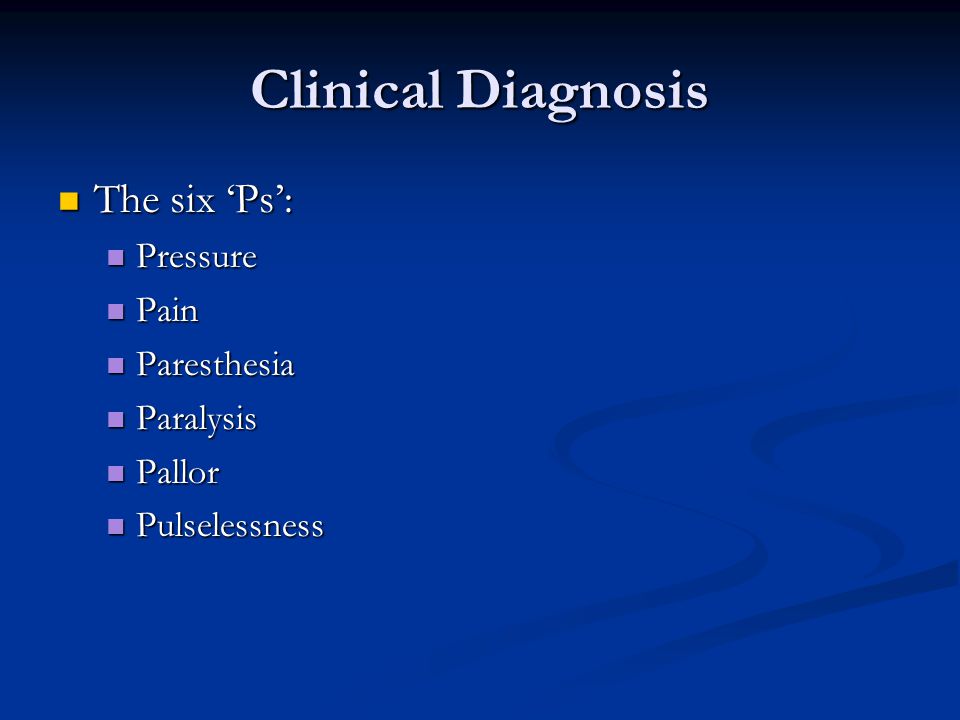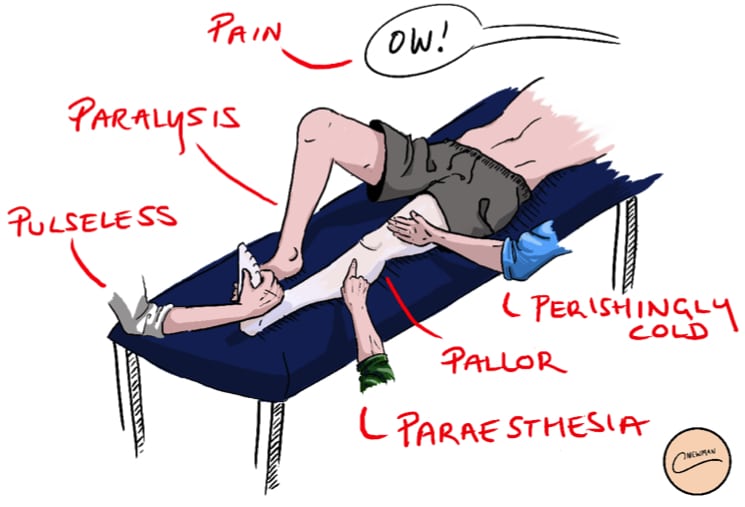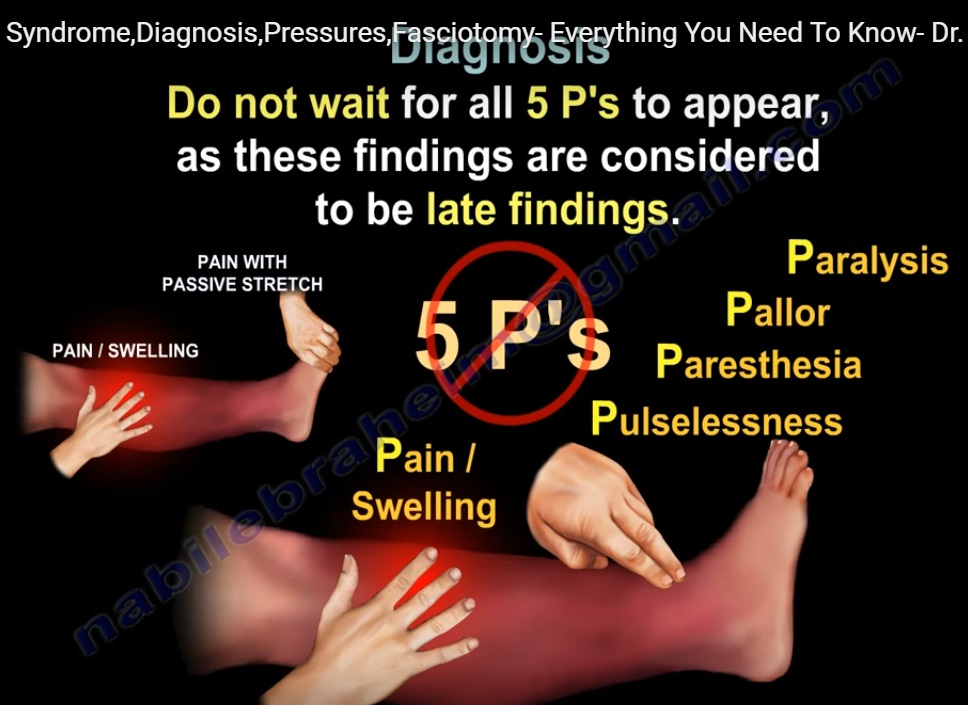
Quiz 1) Trauma and Burns: Severe Right Leg Pain After Tibia Fracture (Compartment Syndrome) Flashcards | Quizlet

Dr Abhilash Sandhyala - The classic presentation of limb ischemia is known as the "6 P's": pallor, pain, paresthesia, paralysis, pulselessness, and poikilothermia. These clinical manifestations can occur anywhere distal to the

2. What are the origins or creator(s) of the "6 P's" of the Peripheral Vascular Assessment? | ResearchGate

Medical and Pharmaceutical - The 6 P's of compartment syndrome: Pain Pallor Paresthesias Poikilothermia Paralysis Pulselessness | Facebook





















